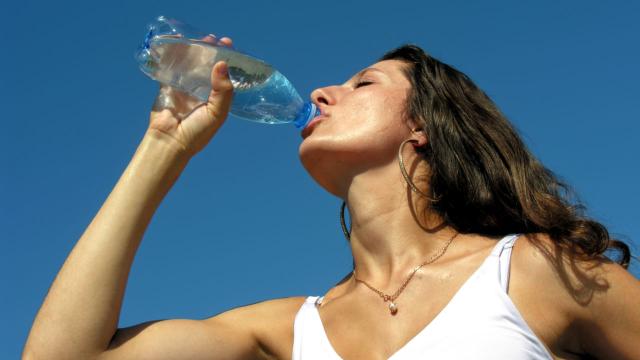Heat stroke is a serious condition that can result in seizures, organ failure, and more. And before you get heat stroke, you’ll experience a milder condition called heat exhaustion. Knowing signs of both can help you keep yourself and your friends safe.
Both conditions occur when the body overheats. Normally, our bodies try to cool us down by bringing hot blood from our core to the surface of the skin, where we radiate that heat into our environment. The evaporation that results from sweating also helps to cool our skin. We get into trouble when the environment is too hot or too humid for these mechanisms to cool us down.
Who Is at Risk for Heat Illness
Heat stroke in healthy people is often associated with exercise, since working out raises your core temperature. This is especially the case if you’re not very fit, or if you’re used to working out in cooler weather. As you get used to exercising in the heat, your body learns how to cool itself more efficiently.
Things that increase the risk of heat exhaustion and heat stroke include:
- Exercising in high temperatures and humidity
- Poor fitness
- Being large (whether you’re obese or very muscular)
- Dehydration
- Wearing or carrying gear, like football pads or a hiking pack
- Drinking alcohol
- Using certain medications or supplements, including beta blockers and diuretics
- Any disability or illness that makes it harder for you to get out of the heat or to cool yourself
Signs and Symptoms of Heat Exhaustion
Heat exhaustion occurs when your core body temperature is elevated, but not enough to involve your brain. If you or an overheated friend shows any sign of being confused, for example, assume it’s heat stroke and get medical help right away.
Signs and symptoms of heat exhaustion may include, according to the CDC:
- Dizziness
- Nausea and vomiting
- Headache
- Fatigue or weakness
- Heavy sweating
- Cold, pale, and clammy skin
- A fast, weak pulse
If you begin to feel these symptoms, start cooling yourself down right away: move to the shade or air conditioning, loosen your clothing, have a cold drink, and keep watch for any signs that you’re feeling worse or not getting better. If you haven’t recovered within an hour, seek medical help.
Signs and Symptoms of Heat Stroke
Heat stroke occurs when the body’s temperature is extremely high (over 40,) and can affect the brain as well as the body.
Heat stroke is a serious condition, so if you suspect it, get medical help right away. If you’re at an event with medical staff (like if you’re running a marathon or playing in a football game), alert them. Otherwise, call 911 or the emergency number for your area. Signs of heat stroke can include some of the symptoms above, like headache, dizziness, and nausea, plus:
- Confusion, irritability, or hallucination
- Passing out or collapsing
- Trouble walking
- Seizures
- Reddened skin, with or without sweating
You can help the person cool down while you wait for help. Medical staff may decide it’s best to cool the person down before transporting them to a hospital, but that depends on whether the person needs other medical treatment. The ideal way of cooling down a person with heat stroke is to put them in a tub of cold water with ice, and stir the water constantly.
If that’s not possible, a cold shower or a cold hose can work, or apply icy wet towels to the person’s body and swap them out every three minutes or whenever they stop being icy cold.

Comments